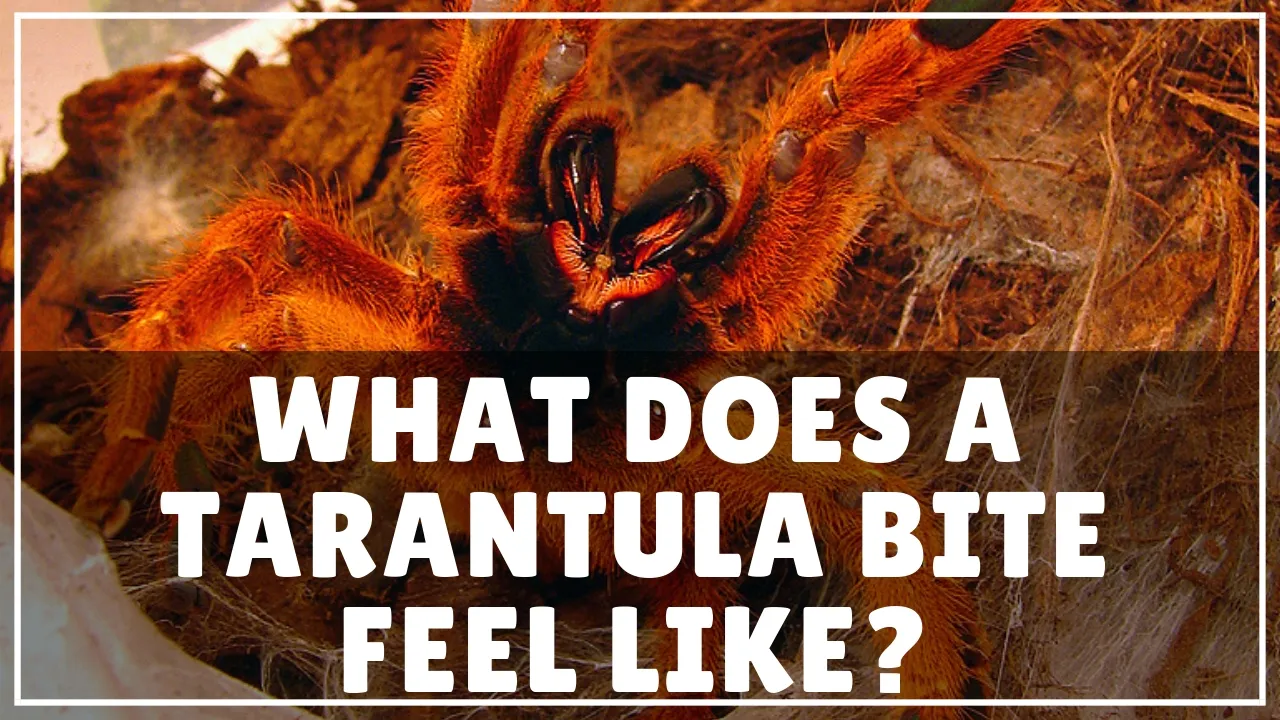The Reality of Tarantula Bites
Tarantulas, despite their intimidating size and appearance, are not typically aggressive. However, like any animal, they may bite in self-defense when threatened or provoked. While the venom of most tarantula species is not considered life-threatening to humans, their bites can still be painful and cause various unpleasant symptoms. It’s important to understand what a tarantula bite entails, how to identify it, and what steps to take if you or someone you know is bitten. This article explores the reality of tarantula bites, providing insights into the visual characteristics, symptoms, and necessary treatment procedures. Being informed is key to minimizing the impact of such encounters and ensuring a swift recovery. The more knowledge you have, the better equipped you will be to handle the situation.
What a Tarantula Bite Looks Like
The appearance of a tarantula bite can vary depending on the species of tarantula, the amount of venom injected, and the individual’s sensitivity. Typically, a bite will present as one or two small puncture wounds, similar to a bee sting. These puncture marks are the result of the tarantula’s fangs piercing the skin. Around the bite site, you’ll likely observe redness and swelling. The extent of these visual symptoms can range from mild to moderate. In some cases, especially with more potent venom or in individuals with heightened sensitivity, the area around the bite may become significantly inflamed and discolored. It’s important to keep a close eye on the bite site and surrounding skin, documenting any changes in appearance to help with diagnosis and treatment.
Immediate Symptoms After a Bite

Shortly after a tarantula bite, several immediate symptoms can manifest. Pain is a common initial reaction, ranging from a slight stinging sensation to more intense throbbing. The level of pain depends on factors such as the tarantula species and the location of the bite. Accompanying the pain, you may experience localized redness and swelling around the bite site. Some individuals report a feeling of heat in the affected area. In more severe cases, or with sensitive individuals, symptoms can include muscle cramps, nausea, and, rarely, difficulty breathing. Recognizing these immediate symptoms is critical for determining the severity of the bite and the need for medical attention. Early identification and prompt treatment can significantly influence the course of recovery and minimize any potential complications.
Types of Wounds & Severity
The severity of a tarantula bite wound depends on factors like venom toxicity, the amount injected, and individual sensitivity. Most bites result in mild to moderate reactions. These typically involve localized pain, redness, and swelling, resolving within a few days. However, more severe reactions can occur. Allergic responses can cause hives, itching, and difficulty breathing, necessitating immediate medical intervention. Some bites might lead to more extensive inflammation, including blistering or, in rare instances, tissue necrosis. Understanding the potential range of wound types and their severity is crucial for appropriate treatment. Always monitor symptoms closely and seek professional medical advice if you notice concerning changes, such as increasing pain, signs of infection, or systemic symptoms like fever or difficulty breathing. This is particularly important as the reaction can depend on the individual.
Top 5 Facts About Tarantula Bite Wounds
Fact 1 Redness, Swelling, and Pain

The most immediate and common signs of a tarantula bite are redness, swelling, and pain at the bite site. This is due to the body’s inflammatory response to the venom and the physical trauma of the fangs. The degree of these symptoms varies. Some bites cause minimal discomfort, while others lead to significant pain and swelling. The affected area may feel warm to the touch and look inflamed. These symptoms are usually localized, meaning they are confined to the bite area. It’s vital to monitor these symptoms, as an increase in redness or swelling, or the development of other concerning signs, may indicate a more severe reaction. Prompt action, such as cleaning the wound and applying a cold compress, can help alleviate discomfort and reduce inflammation.
Fact 2 Intense Itching and Burning Sensation
Alongside pain and swelling, intense itching and a burning sensation are often reported after a tarantula bite. This is due to the release of histamines and other inflammatory substances at the bite site. The itching can be particularly bothersome, leading to an urge to scratch, which can worsen the inflammation and potentially introduce infection. The burning sensation adds to the discomfort, making the bite feel more severe. It’s important to avoid scratching the bite, as this can break the skin and increase the risk of infection. Over-the-counter antihistamines or topical creams can help alleviate the itching and burning. Keeping the area clean and cool can also provide relief, and help prevent further complications from the bite.
Fact 3 Potential for Allergic Reactions
While uncommon, allergic reactions to tarantula bites can occur. These reactions are a response to the venom and can vary in severity. Mild reactions may include hives, skin rashes, and increased itching. More severe reactions, known as anaphylaxis, can cause difficulty breathing, swelling of the throat and face, and a drop in blood pressure. Anaphylaxis is a life-threatening condition that requires immediate medical attention. Individuals with known allergies to insect venom or other allergens are at higher risk. If you experience any symptoms of an allergic reaction after a tarantula bite, seek immediate medical help. This includes using an epinephrine auto-injector (if prescribed) and going to the nearest emergency room. Quick action can save a life.
Fact 4 Necrotic Tissue

In rare instances, a tarantula bite can cause tissue necrosis, where the tissue around the bite site dies. This can result in the formation of a black, crusty area that may take several weeks to heal. Necrosis is a sign of a more severe reaction and often indicates a strong inflammatory response or, in some cases, secondary infection. If you notice the development of necrotic tissue after a bite, it’s crucial to seek immediate medical attention. A healthcare professional may need to clean and debride the wound and, in severe cases, might prescribe antibiotics. Proper wound care and medical intervention are essential to prevent the spread of necrosis and promote healing. It is important to monitor the area for changes.
Fact 5 Long-Term Effects
While most tarantula bites heal without long-term complications, some individuals may experience lingering effects. These can include persistent pain, itching, or skin discoloration at the bite site. In rare cases, nerve damage might occur, leading to numbness or altered sensation in the affected area. Psychological effects, such as anxiety or fear related to spiders, can also persist. For most people, the physical symptoms will fade within a few weeks or months. However, if symptoms persist or worsen, or if you have concerns, it’s important to consult a healthcare professional for further evaluation and treatment. They can provide guidance on managing long-term effects and provide reassurance.
First Aid and Treatment
Immediate First Aid Steps

If you’re bitten by a tarantula, prompt first aid is crucial. First, remain calm and move away from the tarantula to prevent further bites. Clean the bite area thoroughly with mild soap and water. Apply a cold compress or ice pack to reduce pain, swelling, and inflammation. If the bite is on a limb, elevate it to help minimize swelling. Avoid scratching the bite to prevent secondary infection. Observe the bite site closely for any changes in symptoms, such as increased redness, swelling, or signs of infection. Document the time and appearance of the bite. These initial steps can provide relief and reduce the severity of the bite. If you experience any concerning symptoms, or if you are unsure of how to proceed, seek medical attention as soon as possible for evaluation and advice.
When to Seek Medical Attention
Knowing when to seek medical attention after a tarantula bite is vital. Consult a doctor if you develop signs of an allergic reaction, such as difficulty breathing, swelling of the face or throat, or hives. Other indicators for medical evaluation include increasing pain, redness, or swelling, or any signs of infection like pus or fever. If you experience systemic symptoms, such as muscle cramps, nausea, or dizziness, seek medical help. If you are unsure of the severity of the bite or if you have any underlying health conditions, err on the side of caution and contact a healthcare professional. Early diagnosis and treatment can significantly improve outcomes and minimize the risk of complications. Prompt action is key to a successful recovery.
Proper Wound Care for Tarantula Bites
Proper wound care is essential for promoting healing and preventing complications after a tarantula bite. Keep the bite area clean by gently washing it with mild soap and water at least twice a day. Avoid using harsh chemicals or scrubbing the area aggressively. Apply a topical antibiotic ointment to prevent infection. Change the dressing daily, or more often if it becomes soiled. Monitor the wound for any signs of infection, such as increased redness, pus, or fever. You may also consider applying a cool compress or ice pack to relieve pain and reduce inflammation. If the bite causes significant pain or itching, you may take over-the-counter pain relievers or antihistamines. Following these steps will help minimize your discomfort.
